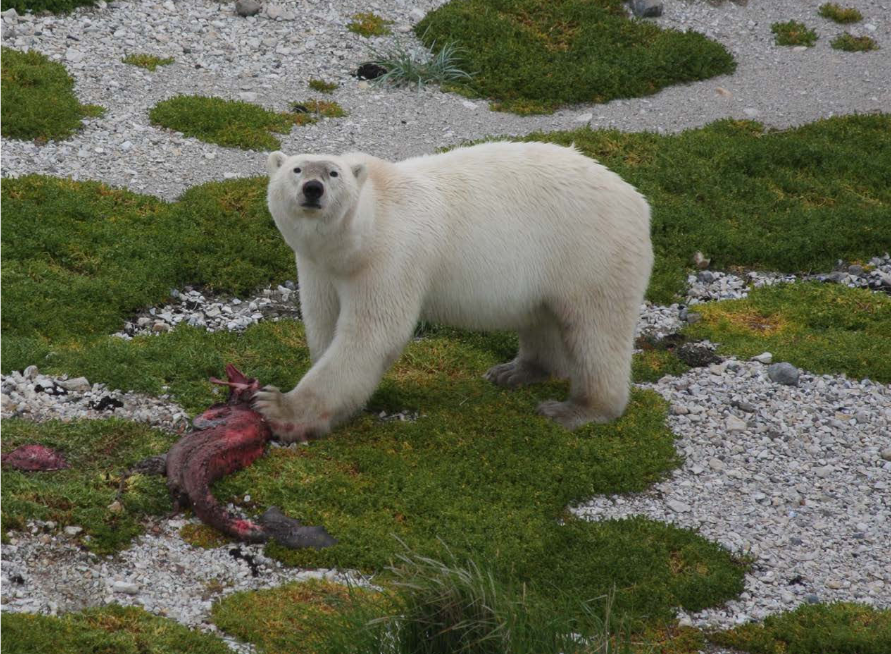Definitions and DSM-5 • Sunshine and strength • Rethinking honeybee history • High altitude horses • Polar bear consuming a seal • Causes of academic burnout • Useful urine? • The Agouti and the ecstasy
 Psychiatry: Definitions and DSM-5
Psychiatry: Definitions and DSM-5
The Diagnostic and Statistical Manual (DSM) of psychiatry has been described as the ‘bible’ of disease definitions for the field of mental health, providing a standardised framework for classifying and discussing mental disorders. However, the recent publication of its fifth edition (DSM-5) by the American Psychiatric Association has proved controversial, with the National Institute of Mental Health in the US proposing an alternative framework “from genes to neural circuits to behaviors”, that they argue is based on less subjective criteria. In a new Debate article published in BMC Psychiatry, Professor Dominic Sisti and colleagues discuss these controversies and argue that subjective values affect all medical classification systems, and this may not necessarily be to their detriment.
Maternal health: Sunshine and strength
Vitamin D deficiency can affect many aspects of physical health, including muscle strength, but how this might affect pregnant women is not well known since this group are often excluded from medical studies. Now, a cross-sectional study comparing vitamin D levels and physical strength in pregnant Somali immigrants versus native Swedish women finds that both measures are lower among Somali women, possibly due to less exposure of the skin to UVB radiation. The authors caution that health professionals should take these factors into account when managing the care of non-native patients.
Conservation genetics: Rethinking honeybee history
Honeybees can be divided into four major evolutionary lineages based on their morphology, with distinct divisions between West Mediterranean, North Mediterranean, African and Oriental lines. However, a major new genetic analysis comparing honeybee populations from Syria, Lebanon and Iraq with reference populations from the Old World now finds strong support for a fifth major genetic lineage in this species, and suggests an independent African origin for the group. These new findings therefore highlight the need to re-assess conservation efforts aimed at preserving the genetic diversity of the honeybee and its subspecies in the Middle East.
Evolution: High altitude horses
A high-altitude lifestyle can be also be a high-stress lifestyle, exerting strong evolutionary pressures on populations through hypoxia and exposure to ultraviolet radiation. A genome-wide association study among feral horses introduced to the Andean mountains by Spanish conquistadors in the 1500’s finds more than 100 candidate genes for adaptation to living at high altitudes, including significant signals in hypoxia-induction-pathways that have previously been discovered in humans. Other genetic signals related to the nervous system, and highly endemic vegetation in high-altitude environments, highlights how selection to this unforgiving environment has played out over relatively short evolutionary time scales.
Image of the month:
 Polar bear consuming a seal. From “Dietary composition and spatial patterns of polar bear foraging on land in western Hudson Bay” Gormenzano & Rockwell (2013) BMC Ecology, 13:51
Polar bear consuming a seal. From “Dietary composition and spatial patterns of polar bear foraging on land in western Hudson Bay” Gormenzano & Rockwell (2013) BMC Ecology, 13:51
Occupational health: Causes of academic burnout
Prolonged exposure to stress in the workplace can cause “burnout”, resulting in exhaustion and under–performance. To investigate the causes of this is an academic environment, researchers from the University of Zaragoza, Spain, combined both qualitative and quantitative methods to assess workplace-based stress among individuals, and associations between different sub-types of burnout. They find that the majority of burnouts can be attributable to the structure and function of organizations, illustrated by one respondent who lamented the “feudal structure of the departments”.
Pediatrics: Useful urine?
Pancreatic disorders are routinely diagnosed and managed by measuring the serum level of amylase in blood. For pediatric patients in particular, frequent blood draws can be a distressing experience, and so a less invasive method of sampling for biochemical markers could prove a great relief. Now, after analysing 14 years-worth of samples, a team of Japanese researchers from Chiba University have found that it may be possible to use the amylase/creatine ratio in urine to manage the pancreatic disorder hyperamylasemia, since this correlates strongly with levels of serum amylase.
Neurogenomics: The Agouti and the ecstasy
Black Agouti rats given a single dose of the drug MDMA, otherwise known as ecstasy, still show neurotoxic effects on the brain three weeks afterwards. Although some recreational drugs are known to impair cognitive functions involved in memory, mood and behaviour among long-term users, this latest study highlights the vulnerability brain regions like the hippocampus that displayed reduced gene expression of ‘memory’, ‘cognition’, ‘dendrite development’ and ‘regulation of synaptic plasticity’ gene sets. Understanding the neurogenomic consequences of exposure to drugs on brain function could provide a much better understanding of both the risks involved in their use, and their potential benefits as therapeutic agents for psychiatric disorders such as post-traumatic stress.
![]() Follow @BMC_series
Follow @BMC_series
![]() Watch our YouTube channel
Watch our YouTube channel
![]() Browse our list of journals
Browse our list of journals
![]() Subscribe to updates from the blog
Subscribe to updates from the blog
Comments